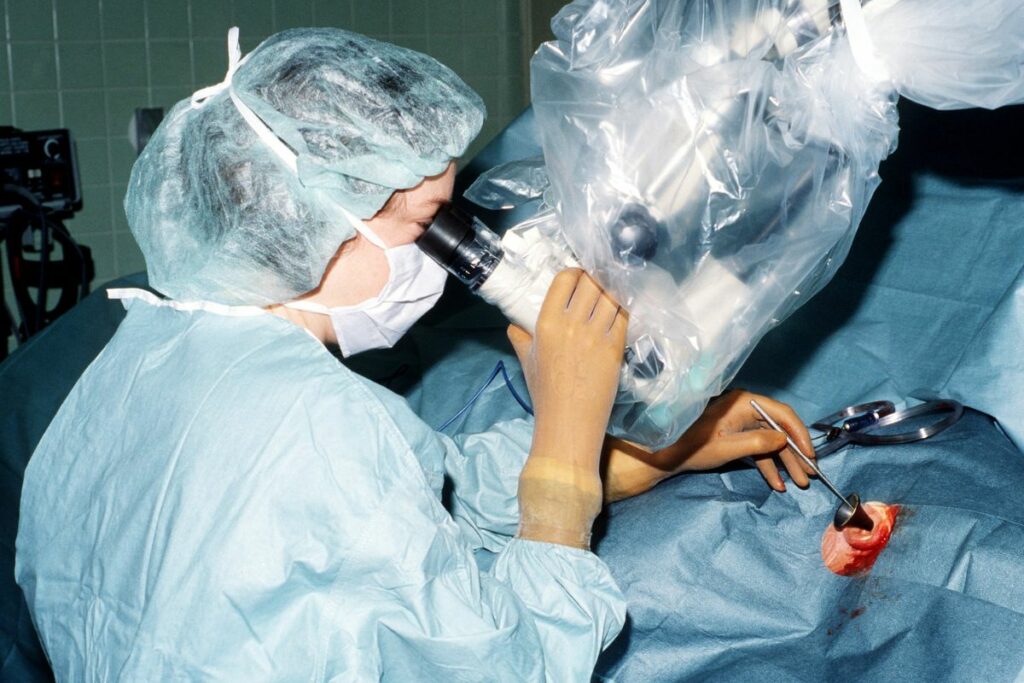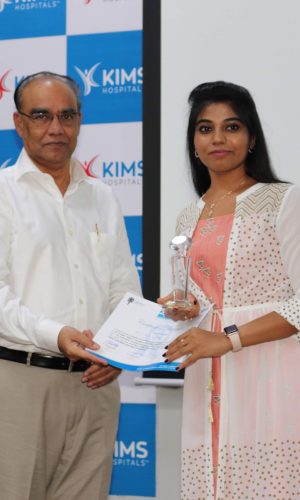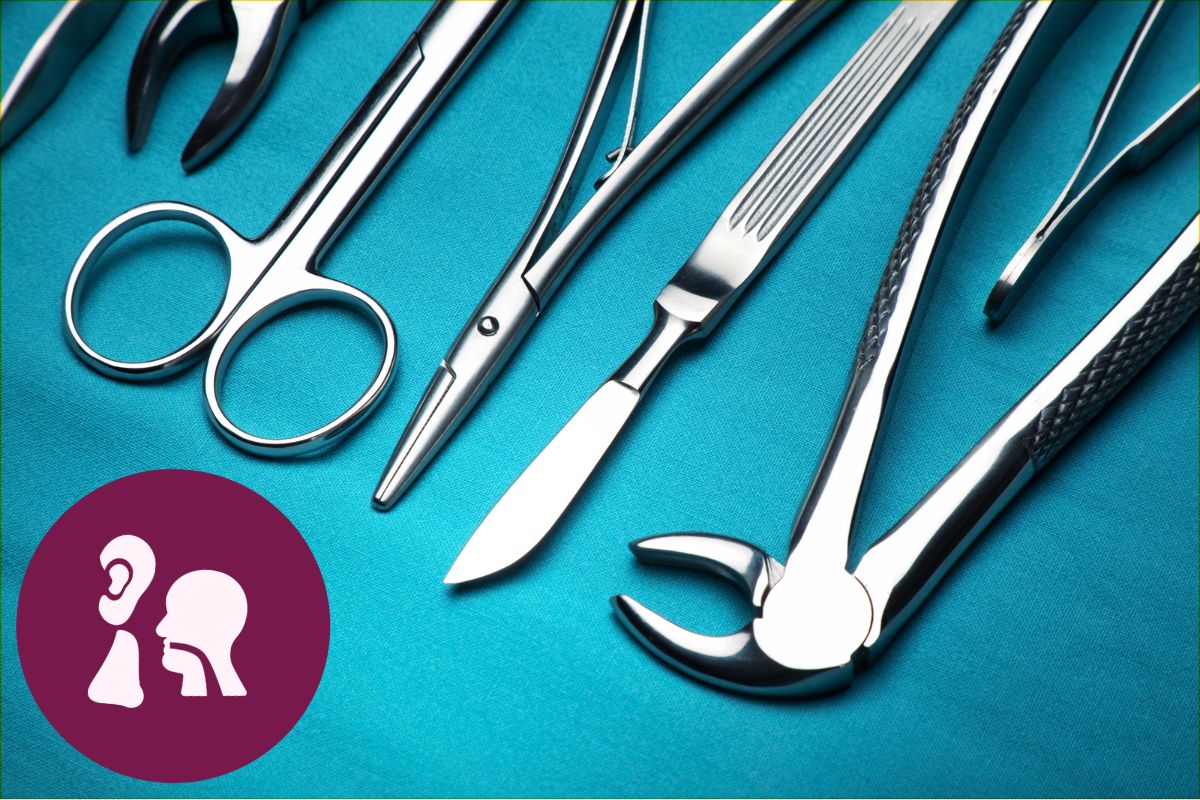Introduction:
The human ear consists of tiny bones and organs which help in recognising sounds. Middle ear transmits sound waves to the brain. Mastoid is a unique type of bone present behind the ear, and on the base of the skull. Unlike normal bones, it is made of air sacs and looks like a sponge. An infection of the mastoid bone leads to mastoiditis. A qualified ENT specialist performs mastoidectomy surgery to remove the infection. In some conditions ENT specialists perform mastoidectomy with tympanoplasty to recover hearing ability.
WHAT IS MASTOIDECTOMY, AND WHAT ARE ITS INDICATIONS?

The mastoid is a bone present in the ear that looks like a honeycomb filled with air spaces. Proper airflow in the ear from the Eustachian tube and other ear parts is necessary for its functioning. Any infection in the middle ear or the Eustachian tube might lead to mastoid bone infection, it is common in children and called mastoiditis.
Mastoidectomy is a surgery to remove the infection present on the mastoid bone. Untreated mastoid bone infection may lead to infection in the skull. In some cases, the infected cells result in abnormal ear growth known as cholesteatoma. Indications of mastoidectomy include ear discharge, ear pain, hearing loss, swelling and redness behind the affected ear.
HOW IS MASTOIDECTOMY SURGERY PERFORMED?
Doctors perform mastoiditis surgery after they have concluded that the infection cannot be cured with medication. Mastoidectomy surgery is done under general anaesthesia. Doctors perform surgery by accessing the mastoid bone by making an incision behind the infected ear. They drill down to the mastoid bone to remove the infected part. Using a suction doctor clears all the debris and the blood released. Doctors will remove the infected mastoid cells and do the stitches. Stitches are covered to prevent external infection and to keep the wound dry and clean. In rare conditions, surgeons remove the wall covering the ear canal and the mastoid cavity to avoid recurring ear infections. Mastoidectomy with tympanoplasty is performed by your doctor to restore natural hearing and eliminate complications.
WHAT ARE THE TYPES OF MASTOIDECTOMY?
The mastoidectomy procedure depends on the intensity of the infection and the method of surgery. They are:
Surgery is done by an incision on the back of the ear and removes the infected tissue.
In this surgery, the surgeon will remove some middle ear bones and infected mastoid cells.
An ENT doctor recommends this surgery if the infection is severe and complicated. In this procedure an ENT surgeon removes infected mastoid tissues, ear canal, and most of the middle ear organs.
WHAT IS MASTOIDECTOMY WITH TYMPANOPLASTY?
If a person is suffering from mastoiditis and eardrum or tympanic membrane rupture, then doctors perform this surgery. Ear surgeons will perform mastoidectomy and tympanoplasty to avoid multiple surgeries. They will remove the entire ear infection in a single attempt. Mastoidectomy with Tympanoplasty surgery takes nearly 2 to 2.5 hours.
ARE THERE ANY RISKS INVOLVED IN THE SURGERY?
In mastoidectomy with tympanoplasty surgery, there are certain risks involved, but none of them were life threatening. ENT surgeons perform surgery with utmost care to mitigate the risks.
- Tinnitus (ringing in ears)
- Dizziness
- Hearing loss
- Facial nerve injury
- Recurring infections
An experienced ENT surgeon will perform surgery with high accuracy, and no risks or complications will be seen after the surgery.
WHAT ARE THE PRECAUTIONS AND RECOVERY METHODS AFTER THE SURGERY?
- Patients should not take a head bath for 4-6 weeks or as advised by your surgeon
- Stay away from infected people with cold, cough or sneezing
- Do not sleep on the operated site for at least 2 months
- You can restart your regular life after 3-5 days or as advised by your surgeon
- Do not blow your nose after the surgery
- You should stop swimming or diving activities for at least 3 months
- Follow the necessary precautions as advised by your ear surgeon.
- Visit the doctor at regular time intervals until the surgery is cured completely
- You should change the cotton daily as advised by your surgeon
- Ear discharge should not occur
FAQs
Cure from mastoidectomy depends on the type of surgery performed. Usually, in 4-6 weeks, you can recover with a simple and modified radical mastoidectomy. After recovery, you need to follow some necessary precautions. If surgery is performed on children, consult a paediatric ENT from time to time for a better recovery.
Yes, one can have good hearing after simple and modified radical mastoidectomy. Following proper medication, exercises and diet can gradually improve their hearing after the mastoidectomy surgery. In the case of radical mastoidectomy, you can hear, but hearing is poor compared to other procedures.
Mastoidectomy is safe and clears infection present on the mastoid bone. You can improve your hearing and enjoy your life to the fullest. There are certain complications with the surgery, but with proper care and guidance from an ENT specialist, you can mitigate them.
If you observe any mastoiditis symptoms, consult an ENT specialist immediately. The initial stages of infection on the mastoid bone can be cured by medication. If the infection is severe, surgery is the only cure for mastoidectomy. If you neglect the surgery, then it might spread to the brain.
Doctors perform Mastoidectomy surgery to remove the infection. It also helps in reducing recurring middle ear infections and complications like cholesteatoma. Other advantages include the intensity of the following symptoms will be decreased they are:
- Vertigo
- Facial nerve damage (Bell’s palsy)
- Meningitis
- Hearing loss
- Labyrinthitis

WHY CHOOSE EAR SURGEON?
Dr. Shree Cuddapah Rao is acclaimed as one of the best pediatric ENT specialists in Hyderabad. With 10+ years of deep domain experience in the field of ENT, she is the director at Dr. Rao’s ENT Super Specialty Hospital. She underwent specialized training in Rhinoplasty / Facial Plastic surgery at Singapore General Hospital, Singapore. She also underwent advanced training in cochlear implant surgery under Padmashri Dr. Milind V Kirtane and had a Fellowship in a cochlear implant. Having performed over 200 successful cochlear implants for patients worldwide, Dr. Shree Cuddapah Rao is also the recipient of several prestigious accolades in the domain of ENT.
Are you looking for
then you have landed at right place!







